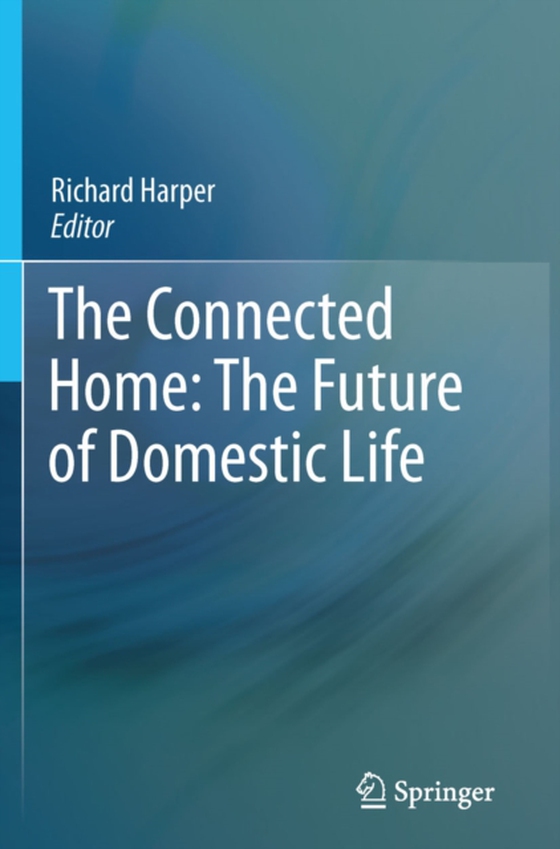
Connected Home: The Future of Domestic Life e-bog
436,85 DKK
(inkl. moms 546,06 DKK)
The title of this new book: "e;The Connected Home"e; reflects the move away from the idea that smart homes would alter the lives of those living in them by providing technologies to take over tasks that were previously the responsibility of the householder, such as managing entertainment, education - and even eating! Up until around 10 years ago this view was commonplace but time has sh...
E-bog
436,85 DKK
Forlag
Springer
Udgivet
11 januar 2012
Genrer
Digital and information technologies: social and ethical aspects
Sprog
English
Format
pdf
Beskyttelse
LCP
ISBN
9780857294760
The title of this new book: "e;The Connected Home"e; reflects the move away from the idea that smart homes would alter the lives of those living in them by providing technologies to take over tasks that were previously the responsibility of the householder, such as managing entertainment, education - and even eating! Up until around 10 years ago this view was commonplace but time has shown that the technologies to support a smart home have not developed in such a way as to support this premise. Instead, what people do in their homes has moved the concept of a smart home into that of the 'connected home'. The rise of on-line games technologies, video connections via Skype, social networking, internet browsing etc are now an integral part of the home environment and have had a significant effect on the home.The contributors to this exciting new book consider and discuss the effects and ramifications of the connected home from a variety of viewpoints: an examination of the take-up of personal computers and the Internet in domestic situations; an analysis of the changing intersection of technology and human habits in the connected home; the impact of gaming, texting, e-book readers, tablets and other devices and their effect on the social conditions of a household; the relationship between digital messaging applications and real geography; and an overview of how sensing technologies for the smart home might evolve (lightweight medical technologies for example). The book culminates by addressing unfinished ambitions from the smart home agenda, the factors that have prevented their realisation, and addresses the need for extending research into the area.
 Dansk
Dansk

